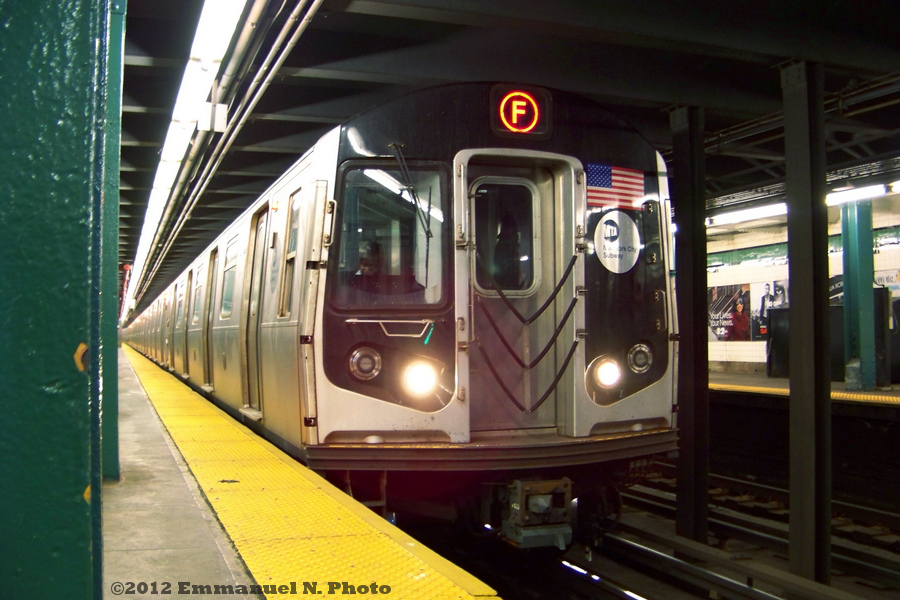
/cdn.vox-cdn.com/uploads/chorus_image/image/65254894/shutterstock_618182666.0.jpg)

This would allow for trains to be run every 6.5 minutes, while also reducing platform and stairwell crowding at major transfer points.
#F train last stop for free#
7 line, allowing for free transfers between the 7, G, E and M).Īs if it hadn't already been through enough, the G’s service cutback ended up turning into a literal cutback, as the MTA decided to reduce the length of G trains to just four cars, accounting for the increased train traffic and terminal congestion that the V would bring to the Queens Boulevard line. (In 2011, the complex was connected to the nearby No. This literally paved the way for an easier transfer between the G and E trains, one that remains massively popular today.
#F train last stop install#
Citing the loss of a major transfer point at Queens Plaza, the MTA agreed to install a moving walkway for G train straphangers to transfer from Court Square to the E, which at that time stopped at the nearby, but separate station of 23rd Street–Ely Avenue. What did last, however, was the promise of an easier connection between the G and the E line. That didn’t last for long though - by 2010 the G had been permanently cut to Court Square. As G train riders protested the loss of 13 stops, the MTA promised to implement full, extended G service on weekends and weekday nights. This cutback in G train service launched a domino effect of subway changes, both permanent and temporary. This led the MTA to cut service on the G train instead of the G running all the way to Forest Hills, it would make its final stop at the Court Square–23rd Street Station in Long Island City. Thus, the MTA faced a problem: the V train route could not be implemented with so many trains already running along Queens Boulevard. Instead of its current route, the G would head from Smith–Ninth Streets station in Brooklyn to the Forest Hills–71st Avenue station. At the same time, the G train ran differently than it does today. The V, a local train that made 24 stops on weekdays between Manhattan’s 2nd Avenue Station to the Forest Hills–71st Avenue station, was originally meant to reduce overcrowding on the E and F trains, which both also ran to Forest Hills. 7 train still chugs along to Flushing, the J still takes riders to Jamaica and the N still calls Astoria home.īut when the V train first debuted in December 2001 it created such a subway shakeup in Queens that the borough has yet to recover from it, even after the line was eliminated completely in March 2010.


So, in theory, one cause is easily preventable (although you may or may not choose, depending on whether you’re wearing a helmet, to convince people to be considerate of others in subway stations and trains) - and one cause still allows for ever-satisfying frustration with the Metropolitan Transit Authority.In the nine years since the V train made its final run from Manhattan to Forest Hills, Queens’ subway landscape has remained relatively unchanged. MTA spokesman Kevin Ortiz tells amNY that the two most common causes of trains being delayed on the way to their next stop are commuters not boarding in time (holding doors open, etc.) and track crews at work on lines while trains are still running. (Is it good news, actually, when about 1/5 of “best scenario” trains are behind schedule?) The good news is the article says two local lines also rank among the best in the system - the N at 80.4% and the R at 82.9% on time. The sad results? Only 70.8% of F trains arrived on time, the third worst of all lines, after the 5 and the A.Īlthough the G didn’t rank as one of the absolute worst in the system yet, it did rank number one for an increased number of delays over the past year, with 8% fewer trains now running on time. The article, based on studies conducted from August 2013 to July of this year, discusses how much of the time trains running on specific lines arrive at their designated stops according to schedule. The number of delays in subway trains reaching stops on time increased from last summer to this one, says a recent article in amNY, and our local lines are among the worst offenders.


 0 kommentar(er)
0 kommentar(er)
